Friday
Hannah and I pulled in at 2:30 with a rented trencher in tow. I picked this up at Kitz and Pfeil in Berlin on the way up. This weekend is dedicated to running new power lines to the keep and pole barn straight from the new service panel we installed last fall. After opening up the keep and getting my clothes and other supplies put away, I unloaded the trencher from its trailer. This is the same one I rented back in 2011 when I made the first buried electrical runs. While that project was a significant improvement from previous methods of getting power to the keep and pole barn—stringing extension cords through the trees—the limitations were starting to show.
When I first did this seven years ago, I used 10-gauge, 2-conductor direct burial copper cable…mostly. Power was supplied from two 20-amp breakers in the big trailer and run to an outdoor service box using 12-gauge romex. The thicker 10-gauge wire was only run underground to each building where it was spliced to 12-gauge romex in conduits. I also didn’t have subpanels at either building. In the pole barn, I just spliced the incoming connection with wire nuts. In the keep, I gutted the contents of the old fuse box and spliced everything together from the feed, and this was after a spliced stop at the water pump outside. In retrospect, this was terribly kludgy. When you consider the system it was replacing, however, it was revolutionary. Still, the time had come to revisit this project and do it right this time.
I’ve had this planned and budgeted for almost a year and even double-checked all my research against my uncle Cal, a retired electrician who helped us replace our service panel back in November. The existing runs will be replaced by new 8-gauge, 3-conductor direct burial copper cable that will go from the service panel to brand new subbanels in each building with exactly zero splices in between. The keep will have proper circuit breakers and will feed power for the water pump instead of the other way around, using the 10-2 cable salvaged from the existing runs. Running three-conductor cable to the pole barn opens up the possibility of 220v tools and appliances out there. And the outhouse will have its own buried power run courtesy of more of the salvaged 10-2 cable. Also, as long as I’ve got a trencher, I’ll be burying two long runs of Ethernet cable: one between the keep and pole barn and another between the pole barn and big trailer. This will open up a lot of possibilities for the Puckanet. In total, there’s over 1,000′ of cable to either dig up, bury, or snake through conduit, so I’ve got my work cut out for me.
I called Digger’s Hotline a few weeks ago and they had the electric co-op come by and mark the main underground feed. That’s not the only buried cable I need to worry about before I start trenching, however. I want to maintain the current run for the keep as long as possible so I don’t have to rely on the generator overnight. Thankfully, since the new keep run is coming from the service panel and not the big trailer (and goes direct to the keep instead of detouring to the pump), I’ll be able to trench this without having to dig up the existing run. I needed to know how much of a struggle I’d be in for when it came to pulling up the existing runs, though, so I flipped the breaker for the pole barn, took my sawzall to the conduit feeding the building, and started pulling the cable by hand.
This was slow work. After getting the first few feet up, I grabbed a length of 4×4, wrapped the cable around it, and tried pulling that instead. This was still slow work and it was becoming increasingly sweaty work, so I decided to up my power factor and fired up the green ATV. I wrapped some rope around the 4×4 and started tugging it. Much better! I had the entire pole barn-to-big trailer run ripped out of the ground in minutes with no damage to the cable.
Satisfied that removal wouldn’t be a major obstacle to the rest of the project, I moved forward on trenching the new runs. Before I broke ground, however, I wanted to be absolutely sure that my initial measurements were correct. I got out a 100′ spool of nylon rope and staked one end by the pole barn. I ran this toward the keep until I was out of rope, staked off the other end, and used white spray paint to mark the ground along the run. I went around the yard and marked off the rest of my planned trenches the same way, taking a break around 5:30 to run into town for more spray paint and some A&W.
Once all the trench runs were marked, I went back along them with a measuring tape to ensure I had ordered enough cable and wouldn’t need to improvise or compromise. Thankfully, everything checked out and by 6:45 I was ready to fire up the trencher.
This part of the project went quickly. The sandy soil doesn’t offer much resistance and even the few spots with tree roots thick enough to slow down the rotating wheel gave way soon enough. I raised the cut height in the few spots I had to cross the main feed or existing run to the keep, but was otherwise able to run at full depth. The paint markings made it easy to stick to a straight line for the majority of the runs, but I also had clearly marked the few times I needed to make a turn. I thought I’d need to cross two trench lines to make these parts work, but it turns out I could “steer” the trencher just enough to get a shallow arc.
I finished the last run, from the service panel to the outhouse, a little before 8:00. It was getting a little late to start actually burying cable, but there was still enough time and light for me to take care of another important aspect of the project. When we installed the new service panel, we used a 6-space breaker box. Unfortunately, for 2-gang breakers for the big trailer, keep, and pole barn, as well as a single-gang breaker for the outhouse and service panel outlets, that comes up short. I really didn’t want to have to tear down the current service box and all the conduit connections just to get that extra spot, but I noticed that our 6-space box used spaces “2” through “7” and had “1” and “8” crossed out on the attached diagram. I found that Square-D also sells a 8-space box that uses the same housing and just has different internals (which mount the same way) so I bought one and figured I could just swap the insides while keeping the existing conduit connections.
I pulled the meter to cut off power to the main breaker box and began the transplant surgery. This worked out perfectly and I soon had my required 8 spaces. The 6-space box isn’t a loss, at least. I’ll be able to reuse it as the pole barn subpanel.
With the first stages of the project complete, I headed inside for the night. I showered up, then had some of Lyssa’s leftover margarita slush and watched TV until about 10:30 when I stumbled off to bed.
Saturday
Wow. That margarita slush packs a punch. Had a slow start to the day after getting out of bed around 8:00 to let Hannah out. Spent some time cleaning out the bedroom closet to make room for working on the new circuit breaker panel later. I headed into town at 9:30 for an Aunt Judy’s omelet up at the counter. It’s already warmer today but at least not supposed to be very humid.
Once I got back and let Hannah out, I started the first and easiest cable run. I got the 175-foot burial-rated Ethernet cable, coiled up the first 20 feet, and started laying it in the trench between the pole barn and keep. I used some bricks to help hold it down and keep it taut, but pulled them back out after refilling the trench with dirt. I was only able to get most of the way to the keep because I still need to tear up the existing cable, but I was able to fill in over 100 feet of trench and could get the ATV and trencher trailer out from the middle of the yard where I had accidentally moated them in. I hooked the latter to the former and drove around to the outhouse to stow the trencher for transport, towed it around to the truck, and called Hannah for a ride. We left a little before noon to return the trencher to Berlin.
Made it back around 1:00 after a really nice ride back from Berlin through the marsh. It’s a picture-perfect summer day today and it was great to drive through the backcountry with the windows down. Energized, I got right back to work. I took some of the 10-2 cable salvaged from the original pole barn run and laid it out from the pump to the keep. I rolled the spool of 8-3 cable over to the keep, uncoiled enough of it to run to the back side of the building where the subpanel will be, and started rolling out the rest toward the service panel. Once I had it all laid in the trench and verified I had enough on either end, I cut it from the spool and buried the run.
I couldn’t get any further at this point without ripping up the current run to the keep, so at 3:30 I got out my generator and some extension cords and fired it up. It’s running the A/C, fridge, indoor water pump , and the Puckanet UPS. I went into the big trailer and completely disconnected the breakers from the old runs to the keep and pole barn. I pulled these back out through the bottom of the trailer and scrapped the conduit standoff where they came in. The big trailer is now 100% seperate from the other buildings, electrically.
I hopped on the green ATV and started pulling the old run to the keep. Once again, this went surprisingly well and the cable should all be reusable. I started working on burying the rest of the power and ethernet runs to the keep, but hit a snag when it came to getting underneath the building. Originally, I had planned to hand-trench that last 10 feet. However, there are a surprising amount of tree roots in that soil and it’s hard to get leverage on the post-hole shovel in that cramped space. I improvised a solution by spanning that length with conduit. It was a pain in the ass feeding 8-3 cable, 10-2 cable, and Ethernet through over ten feet of conduit and fittings, but it sure beat digging while prone.
At 5:00 I ran into town for a dinner break and to pick up some cheladas, but was soon right back to work. I definitely don’t want to have to run the generator overnight if I can help it. From inside the bedroom closet, I lined up the new subpanel and drilled a small pilot hole out the back wall of the keep. From there, I was able to use my graduated drill bits to make a hole just the right size for my 1-1/4″ conduit to fit through. After mounting the new subpanel and routing all of the existing wiring into it, I was ready to hook up my trenched runs. I left the remaining Ethernet coiled up outside the back of the keep as I’ve got to branch off some more conduit for that later, but I fed the electrical wire up to the subpanel and made all my connections by the light of my flashlight. Each of the five circuits in the keep has their own 15-amp breaker (and this includes the circuits for the water heater and furnace, which are currently disconnected) and the 10-2 run to the pump gets its own 20-amp breaker.
The keep end of the new run was ready by 9:00. All that remained was to make the connections at the pole. The only thing complicating this was that I wanted to make all the pole-side connections at once. I grabbed the 8-gauge cable going to the keep, the end of that cable still on the spool, and a length of 10-2 cable salvaged from the original keep run and coaxed them through some conduit that I connected to the side of the main breaker panel. After plenty of cursing and sweating while straining to see in the dwindling light, I got all my connections made and the keep was back on the grid around 10:20. I shut off the generator and grinned like an idiot the first time the A/C kicked in and it didn’t cause the lights to dim or the fans to change pitch. The first run was complete and a success! I was absolutely beat from fighting big cables all day, so I showered up and was in bed by midnight after watching TV and enjoying a few cheladas.
Sunday
Woke up sore as hell, especially in my hands. Fighting thick cables through conduit is tougher than I would have thought. I took some time to clean up in the keep from the previous day’s efforts, but had to be on the road home by 10:00. Lyssa and the boys leave today for their camping trip and need the truck. Hannah and I will be back later today with the car.
Pulled back in around 2:00 pm after a Menards stop for some more conduit and weather-resistant enclosures for the outhouse outlet and the pump outlet and switch. After getting things unloaded and building a custom conduit junction for the keep’s Ethernet run using a modified set of threaded couplings and graduated drill bits, I was getting eaten alive by mosquitoes. Apparently, I left my only can of bug spray in the truck, so I ran into town and found a can of 100% DEET. Now we’re talking. I also grabbed a frozen pizza and some Gatorade while I was out.
Back at Puckaway and now bugproof, I rolled out the spool and buried the run from the service panel to the pole barn. This run also contains most of a 150 foot length of Ethernet that will branch off to the big trailer. Next, I buried the salvaged length of 10-2 cable from the service panel to the outhouse. With that, all the trenches were filled back in. I dug a small side channel over to the big trailer where the TV antenna cable comes in and ran the rest of the Ethernet cable inside via some 3/4″ conduit.
I mounted an outlet box onto the back of the outhouse and ran the supply cable into it through some conduit. Rated for 20 amps and fed end-to-end by 10-gauge cable, this will also be a good tap for powering the pop-up camper. I flipped on the breaker at the service panel and verified we had a good circuit, then moved on to do the same at the water pump. This run is fed directly from the keep’s subpanel with 10-gauge wire and no splices. Never let it be said I don’t learn from my mistakes.
I finished testing the pump outlet a little after 8:00 and it seemed like a good stopping point. The only work left is to run the rest of the keep-side Ethernet through conduit and to make all the pole barn connections. I washed up and put dinner in the pizza oven (without having to turn off the A/C first!) and watched some TV before heading home at 9:45.
Monday
Hannah and I made our way back up in the car around 3:30 pm. I want to finish everything up today as we’ve got potential rain in the forecast. I started by the pole barn, routing the two Ethernet cables inside through some 3/4″ conduit. I moved on to the keep and used about 25 feet of 3/4″ conduit and adapters to feed the Ethernet from the junction box to a drilled hole in the back of the server closet. The communication wiring was complete.
All that was left was to wire up the pole barn. Like I had done for the keep, the easiest way seemed to be to bring the feed wire up to the box from the back, so I routed it through some conduit and drilled my holes. There was just enough cable to hook up the subpanel where I wanted it. Even with overestimation on length when I ordered it, I cut it close on the 8-gauge wiring. I re-routed the old supply wiring into the new subpanel; we now have a 15-amp breaker for all the lights and a 20-amp breaker for all the outlets, with lots of room for expansion.
I threw the breaker for the pole barn at 8:15 and confirmed the last of my new wiring was working as intended. I fired up the air compressor and it whirred to life without hesitation, a marked improvement from the slow struggle it used to start with. Now that we had power to the pole barn, I plugged in a gigabit switch and connected it to my two outdoor Ethernet runs. I tested it with the jukebox laptop and confirmed the Puckanet was now a multi-site network.
- Gigabit pole barn.
- The new supply run is a lot taller.
- Plenty of room for expansion.
Feeling exhausted but victorious, I packed up and headed home a little after 9:00. The work I did this weekend is going to pay dividends for years to come.

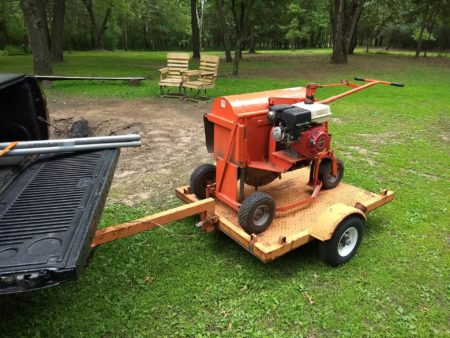
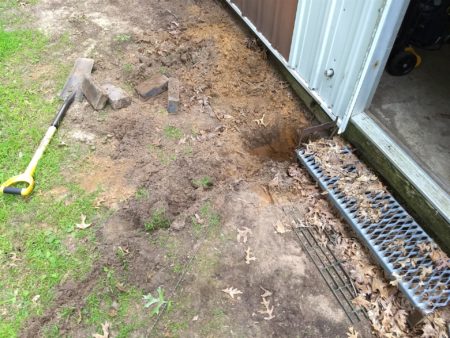
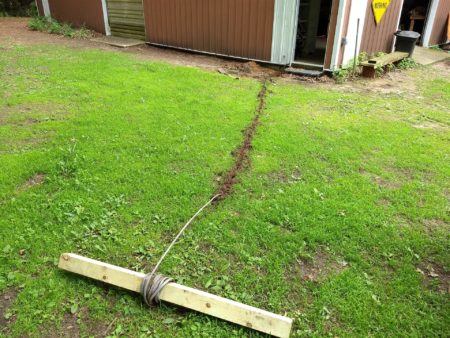

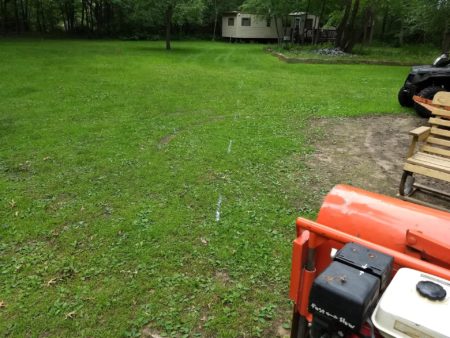
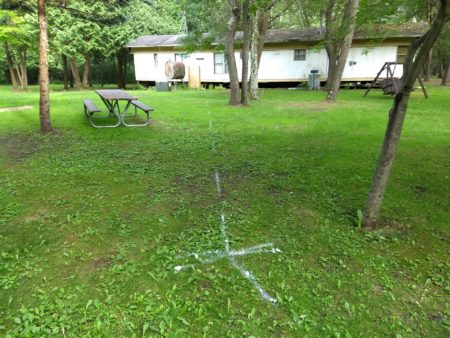
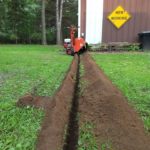
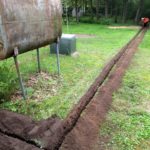
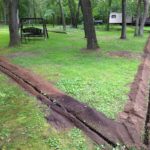

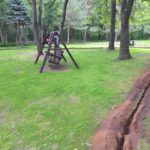
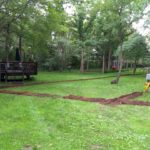
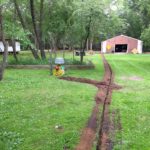
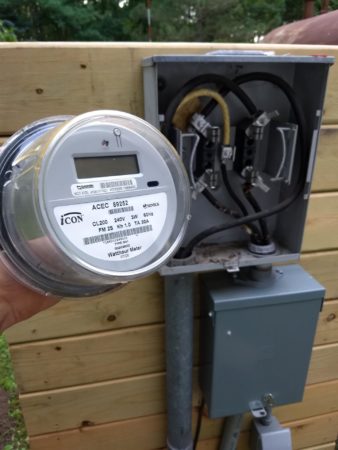
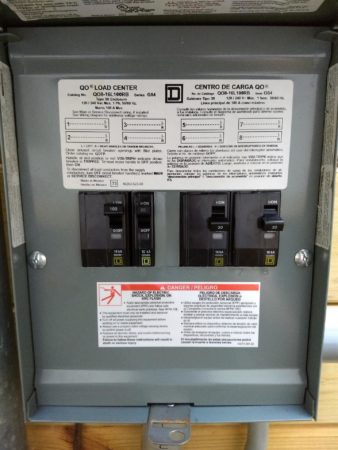
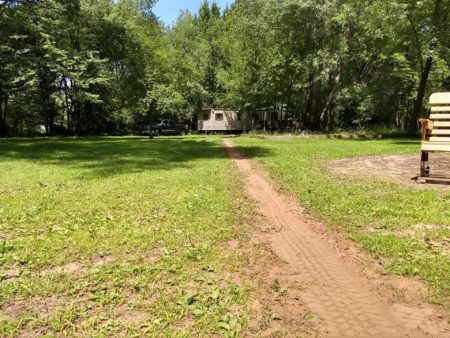
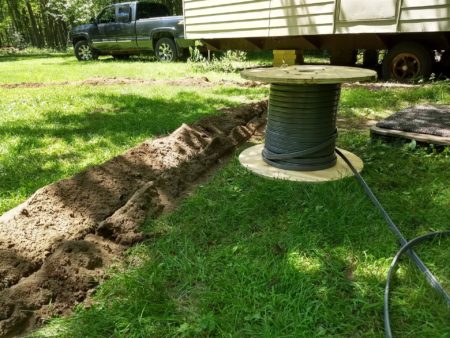
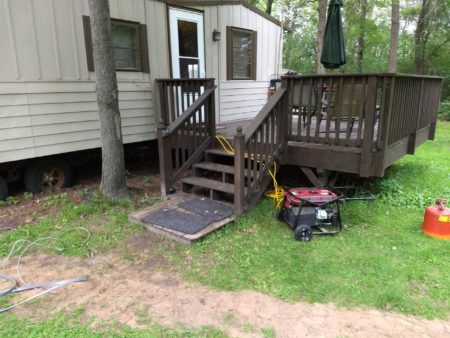
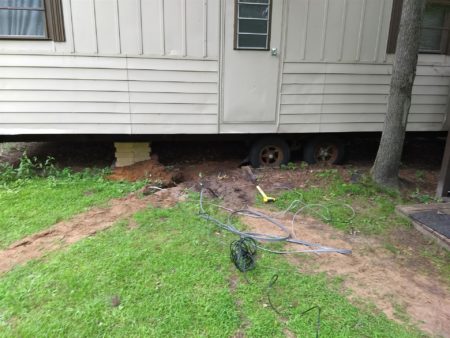
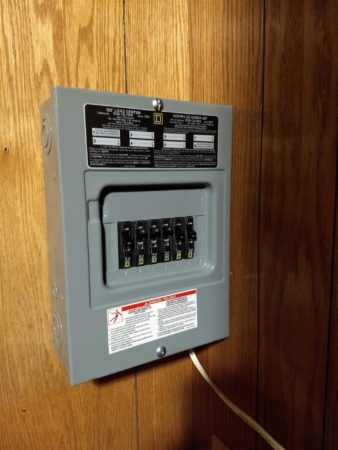
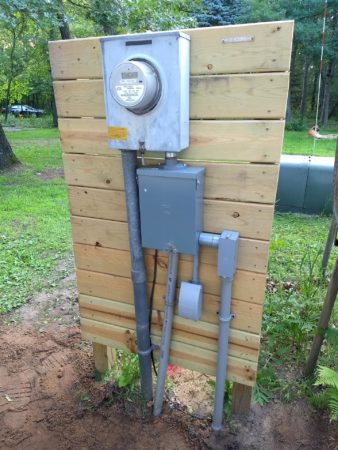
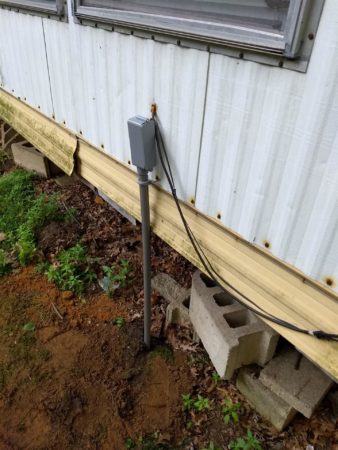
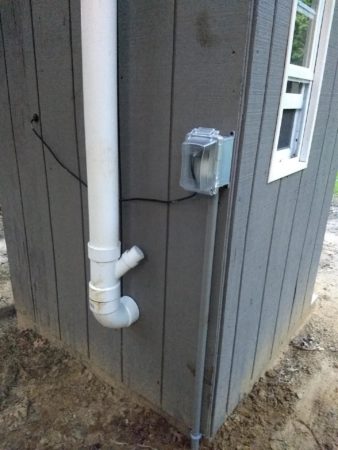
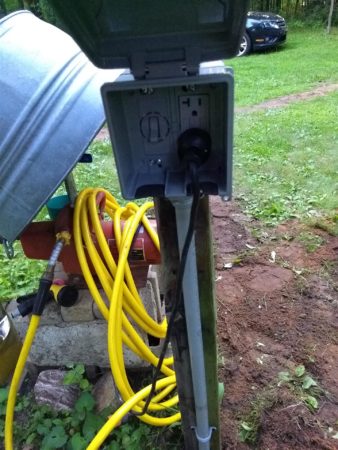
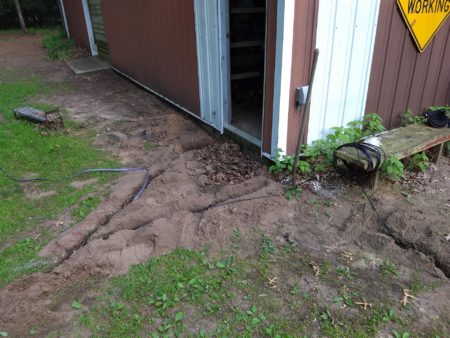
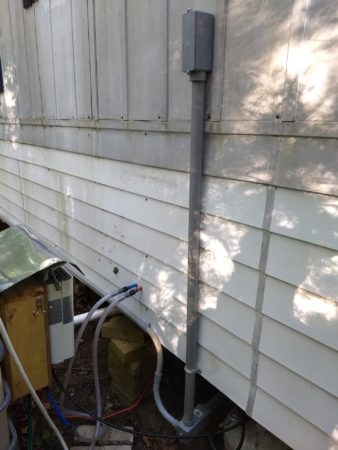
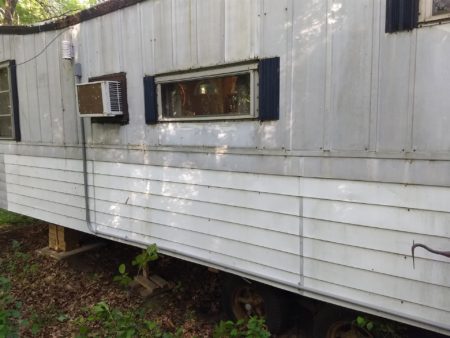
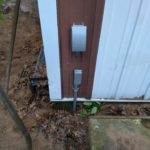
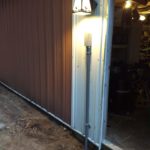
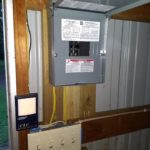

0 Comments
1 Pingback